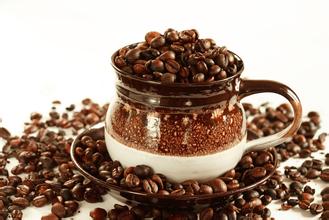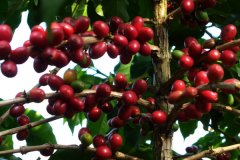Taste and characteristics of coffee what kind of coffee can meet the needs of today's society
Taste basically refers to the sensation received by the jaw (tactilesensationonthepalate). Generally speaking, sensory organs located in the tongue, stomach, and soft and hard jaws are open nerves (freeendingnerve). But after drinking coffee, these nerve terminals sense the consistency and oil of the coffee, and the combined feeling causes the "body" consistency (viscosity) of a cup of coffee to be basically related to the amount of solid matter that is brewed out of the coffee. These substances include the unfiltered fiber in coffee. Fat (oiliness) is the fat in coffee (liquid oil, solid fat, or wax). These substances exist in the form of oil in raw coffee beans, or fat at room temperature, while in baking, they are transferred to liquid and finally extracted during cooking. Different cooking methods can affect the performance of coffee. Take the taste as an example, if the metal filter is used for manual extraction, the taste will be heavier than the filter paper (heavy/thick). This is because the suspended matter in the coffee and the increase in the proportion of oil and fat require further description of the strength Rich,Full,Rounded,Flat and the corresponding details under each flavor. Complexity is different from miscellaneous flavor. Complexity refers to the synthesis of good qualities in coffee, while miscellaneous flavors are unpleasant flavors in coffee, such as coke, wood (old beans), grass (new beans), even rubber, or iodine.
2.Gestation (taste): taste evaluation is for the taste of water-soluble substances in coffee. Contains organic (such as carbohydrates / sugars, vegetable oils, fruit acids, etc.); tastes range from slightly sweet to extremely sour. Organic compounds include alkaloids (such as caffeine and esters) and non-organic substances that cause bitterness. Non-organic compounds include mineral salts that cause bitterness and may cause tastes ranging from sweet to astringent, soapy to metallic. The basic taste sensations include: sour, sweet, bitter, Duringthecoffeecupping. When tasting light roasted coffee, the function of bitterness is only used as a supplementary or enhanced description of the other three tastes, but bitterness becomes the main taste description when evaluating deep-baked coffee. Bitterness is one of the disgusting feelings. But sometimes bitterness can add points to the senses of food. Bitter but delicious foods include dark chocolate, beer, and grapefruit. The disappearance of bitterness will reduce the appreciation and evaluation of practice. Although proper bitterness can cause a balance in the taste of deep-roasted coffee, it is worth noting that when bitterness remains at the back of the tongue, that is, when bitterness cannot disappear with swallowing, it usually causes extreme sensory disgust, so it can be used as an index to judge the appropriateness of bitterness. The value of sour taste is evaluated by both the mass market and the boutique coffee player market. Acidity is one of the existing taste senses of coffee, if it can be handled well, it can increase the hierarchical sense of taste and improve the taste value. Coffee famous for its sour taste includes Antigua coffee (as sharp as a razor) and mocha coffee, such as lemon smell and sour Yega Chuefei.

Important Notice :
前街咖啡 FrontStreet Coffee has moved to new addredd:
FrontStreet Coffee Address: 315,Donghua East Road,GuangZhou
Tel:020 38364473
- Prev

Columbia Millennium Manor Vera Plateau boutique Coffee
Monsalot is located in the southwest of the Colombian province of Ulla, and most of its farmers grow on a small scale, treating coffee as a staple agricultural product in exchange for cash. A few years ago, the New Millennium Farmers' Association (Grupo Asociativo Productores del Nuevo Milenio) was established to improve the quality of coffee and expect to sell raw beans at higher prices.
- Next

Pokuit, boquete producing area of Caesalus Manor in Panama
Coffee was introduced into Panama in 1780, when Europeans introduced the first Typica tree species. After that, this mysterious and strange drink conquered the senses of Panamanians, and the local people began to grow it widely. Casa Ruiz, S.A., Panama. Manor, founded in 1920, is located in the Boquete producing area of Baru Volcano Volcano.
Related
- Does Rose Summer choose Blue, Green or Red? Detailed explanation of Rose Summer Coffee plots and Classification in Panamanian Jade Manor
- What is the difference between the origin, producing area, processing plant, cooperative and manor of coffee beans?
- How fine does the espresso powder fit? how to grind the espresso?
- Sca coffee roasting degree color card coffee roasting degree 8 roasting color values what do you mean?
- The practice of lattes: how to make lattes at home
- Introduction to Indonesian Fine Coffee beans-- Java Coffee producing area of Indonesian Arabica Coffee
- How much will the flavor of light and medium roasted rose summer be expressed? What baking level is rose summer suitable for?
- Introduction to the characteristics of washing, sun-drying or wet-planing coffee commonly used in Mantenin, Indonesia
- Price characteristics of Arabica Coffee Bean Starbucks introduction to Manning Coffee Bean Taste producing area Variety Manor
- What is the authentic Yega flavor? What are the flavor characteristics of the really excellent Yejasuffi coffee beans?

